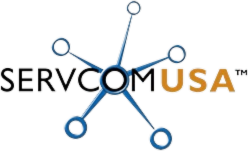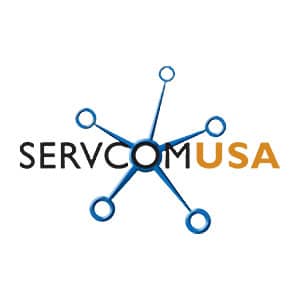If you work in critical infrastructure, you understand the importance of keeping essential systems and services secure. In today’s digital age, safeguarding these systems and services requires more than just traditional security measures.
Multi-factor authentication (MFA) is one of the most effective ways to secure critical infrastructure against unauthorized access, data breaches, and other cyber threats.
MFA is a layered approach to security that requires users to present two or more credentials to verify their identity. These credentials can include something the user knows (like a password), something the user has (like a smart card), or something the user is (like a fingerprint).
By requiring multiple credentials, MFA makes it much more difficult for cybercriminals to gain access to critical infrastructure systems and services.
But how can you implement MFA effectively in your critical infrastructure environment? What are the best practices for MFA deployment? And what are some common questions and concerns about MFA that you should be aware of?
Key Takeaways
- MFA is a powerful tool for securing critical infrastructure against cyber threats.
- To deploy MFA effectively, you should follow best practices like using a risk-based approach, involving stakeholders, and testing your MFA solution.
- Common questions and concerns about MFA include issues around user experience, cost, and interoperability.
Understanding MFA in Critical Infrastructure
Defining Critical Infrastructure and Its Importance
Critical infrastructure refers to the systems and services that are essential for the functioning of a society and economy. These include transportation, energy, water, healthcare, and communication systems, among others.
The importance of critical infrastructure cannot be overstated, as any disruption or damage to these systems can have severe consequences on public safety, economic stability, and national security.
The Role of Multi-Factor Authentication (MFA)
In today’s digital age, critical infrastructure systems are increasingly vulnerable to cyberattacks.
Multi-Factor Authentication (MFA) is a security measure that adds an extra layer of protection to critical infrastructure systems by requiring users to provide two or more forms of authentication before accessing a system or service.
MFA can include something the user knows (such as a password), something the user has (such as a smart card or token), or something the user is (such as a fingerprint or facial recognition).
MFA is an essential tool in safeguarding critical infrastructure systems against cyberattacks. By requiring multiple forms of authentication, MFA reduces the risk of unauthorized access and strengthens the overall security posture of critical infrastructure systems.
Challenges in Implementing MFA
While MFA is an effective security measure, implementing MFA in critical infrastructure systems can be challenging.
One of the main challenges is ensuring that MFA complies with relevant regulations and standards, such as the NIST Cybersecurity Framework and the Essential Eight MFA Guidelines.
Additionally, implementing MFA can be costly and time-consuming, requiring significant investment in hardware, software, and training.
Despite these challenges, implementing MFA is critical for safeguarding essential systems and services. By taking a risk-based approach and prioritizing the most critical systems and services, organizations can effectively implement MFA and strengthen the overall security posture of critical infrastructure systems.
Best Practices for MFA Deployment
When it comes to deploying MFA for critical infrastructure protection, there are several best practices that can help ensure the success of your implementation. In this section, we will discuss three key areas where you should focus your efforts: selecting MFA solutions for different sectors, integrating MFA with existing security frameworks, and ensuring user adoption and training.
Selecting MFA Solutions for Different Sectors
Different sectors within critical infrastructure may have unique requirements when it comes to MFA solutions. For example, a power plant may require different authentication methods than a water treatment facility.
It is important to consider the specific needs of each sector when selecting MFA solutions.
To help you choose the right MFA solution for your sector, consider the following factors:
- The level of security required
- The ease of use for end-users
- The cost of the solution
- The compatibility with existing systems and infrastructure
Integrating MFA with Existing Security Frameworks
MFA should be integrated with your existing cybersecurity framework to provide a layered approach to security. When integrating MFA, it is important to ensure that it does not disrupt your existing security measures.
To successfully integrate MFA with your existing security framework, consider the following:
- The compatibility of your MFA solution with your existing security measures
- The impact of MFA on your network performance
- The level of access control required for each user
Ensuring User Adoption and Training
MFA is only effective if it is used correctly by end-users. Ensuring user adoption and training is critical to the success of your MFA implementation.
To ensure successful user adoption, consider the following:
- Providing clear and concise training materials
- Offering ongoing training and support
- Encouraging end-users to provide feedback on the MFA solution
Frequently Asked Questions
What are the benefits of implementing MFA in critical infrastructure security?
Multi-factor authentication (MFA) provides an additional layer of security to the authentication process, reducing the risk of unauthorized access to critical infrastructure systems and services. By requiring users to provide multiple forms of identification, MFA makes it more difficult for cybercriminals to gain access to sensitive data and systems.
How does multi-factor authentication contribute to reducing cybersecurity risks?
MFA is an effective way to reduce cybersecurity risks by adding another layer of protection to the authentication process. Cybercriminals often use stolen or compromised credentials to gain access to critical infrastructure systems and services. MFA helps to prevent this by requiring users to provide multiple forms of identification, making it much more difficult for cybercriminals to gain access to sensitive data and systems.
In what ways can MFA be integrated into existing security protocols for essential services?
MFA can be integrated into existing security protocols in a number of ways. For example, it can be used in conjunction with existing authentication methods such as passwords or biometric authentication. MFA can also be implemented using hardware tokens or mobile devices, which can be used to generate one-time passcodes for authentication.
What are some common forms of multi-factor authentication used in protecting critical systems?
Some common forms of MFA used in protecting critical systems include hardware tokens, mobile devices, biometric authentication, and smart cards. Each of these methods provides an additional layer of security to the authentication process, making it more difficult for cybercriminals to gain access to sensitive data and systems.
Is multi-factor authentication a requirement for compliance with certain cybersecurity standards?
Yes, multi-factor authentication is often a requirement for compliance with certain cybersecurity standards such as the NIST Cybersecurity Framework and the Payment Card Industry Data Security Standard (PCI DSS). These standards require organizations to implement MFA as part of their overall cybersecurity strategy in order to protect critical infrastructure systems and services.
How does phishing-resistant MFA enhance the security of critical infrastructure?
Phishing-resistant MFA, such as FIDO2, enhances the security of critical infrastructure by providing a more secure method of authentication.
Traditional MFA methods such as SMS or email-based one-time passcodes can be vulnerable to phishing attacks, where cybercriminals attempt to trick users into providing their credentials.
FIDO2, on the other hand, uses a public key cryptography-based authentication method that is resistant to phishing attacks, making it a more secure option for critical infrastructure systems and services.


